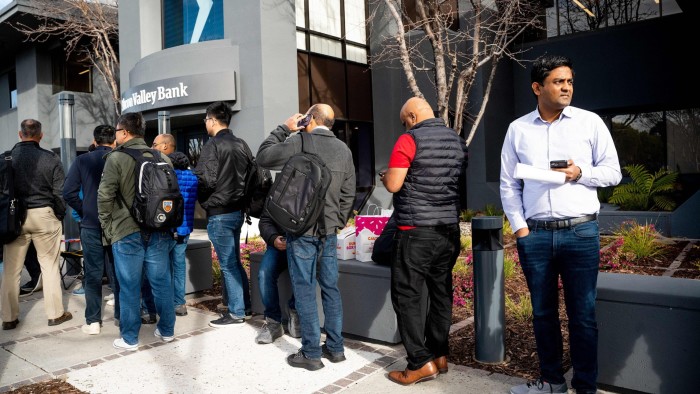Unlock the Editor’s Digest for free
Roula Khalaf, Editor of the FT, selects her favourite stories in this weekly newsletter.
Lindsay, Oklahoma, is 1,600 miles from Santa Clara, California. For some depositors of the First National Bank of Lindsay that distance might feel like a couple of worlds away. But the failure of First National, which collapsed a month ago and was acquired by nearby rival First Bank & Trust, means Lindsay and Santa Clara are twinned in a rather unusual way.
As befits US bank failures, the First National Bank transfer to its new owner should be seamless for most customers. The exception is those holding deposits in excess of $250,000, the limit that federal deposit insurance guarantees. Of about $100mn in assets at the bank, $7mn are uninsured and set to receive initially only 50 cents on the dollar. The amount could rise as First National Bank of Lindsay’s assets are sold by the Federal Deposit Insurance Corporation.
A little short of two years ago, the US federal government famously invoked special authority to make all deposits whole of California’s Silicon Valley Bank, as well as New York-based Signature Bank. The decree was intended to prevent a broader bank run among regional banks whose asset portfolio values were imperilled by rapidly rising interest rates. The FDIC spent a whopping $20bn from its deposit insurance fund to make uninsured deposits whole (though it later implemented a special assessment among large banks as a form of taxpayer reimbursement).
Rohit Chopra, the head of the US Consumer Financial Protection Bureau, earlier this week lamented on social media that larger banks like Silicon Valley Bank, with its elite and well-connected customer base, seemed to get a better deal than tiny First National Bank of Lindsay.
To be clear, the shareholders of Silicon Valley Bank were zeroed out and its management all lost their jobs. And there is a real question as to why all bank deposits should not be guaranteed, as they probably should not be considered a risk investment. It is good for the system that a bank’s status as a safe and reliable storer of value is maintained.
A depositor rescue is not quite a bailout. At the same time, moral hazard — where management knows customer cash will not be sacrificed thanks to poor capital allocation or failures of risk management — is dangerous too. Banking’s irreconcilable dilemma is the duration mismatch between liabilities and assets. When that relationship does break down, deciding who takes the pain is a hard choice — but one that should at least strive to avoid double standards.



